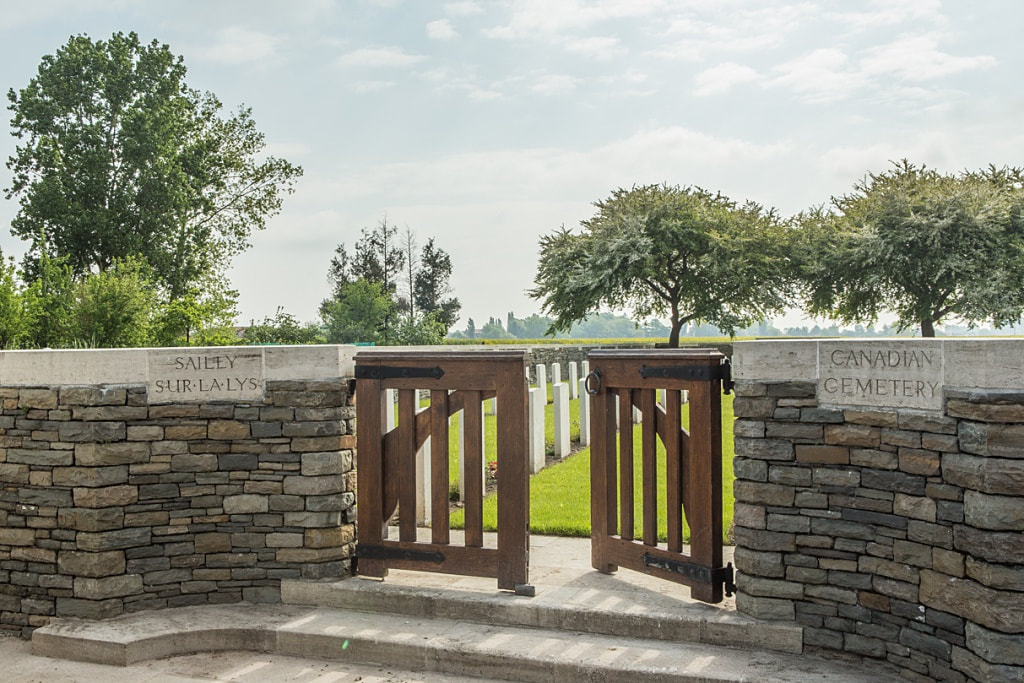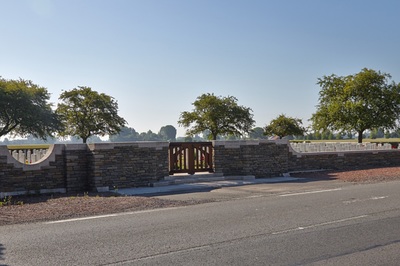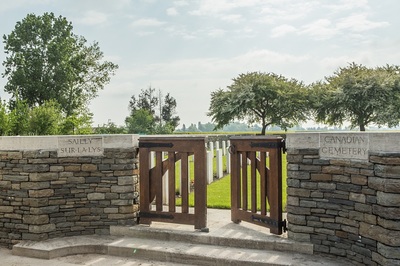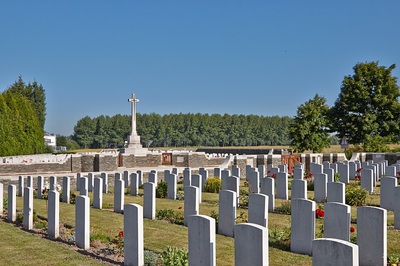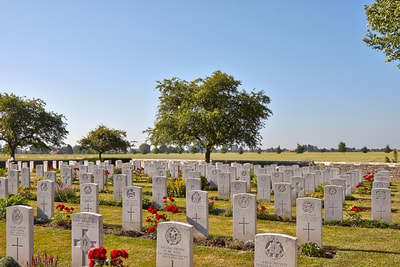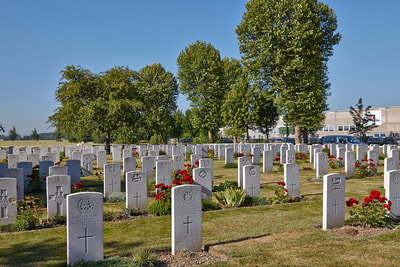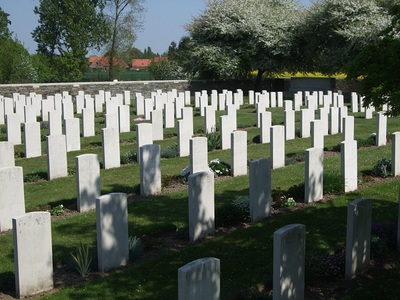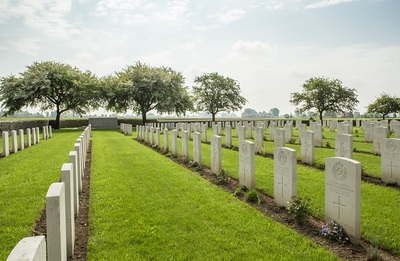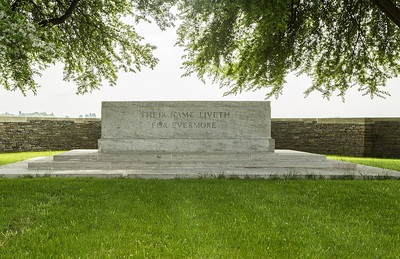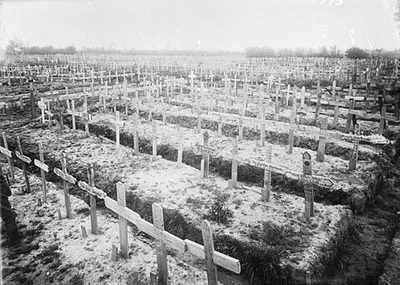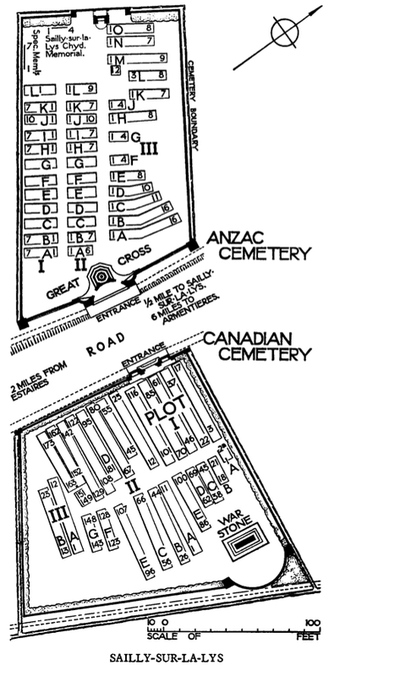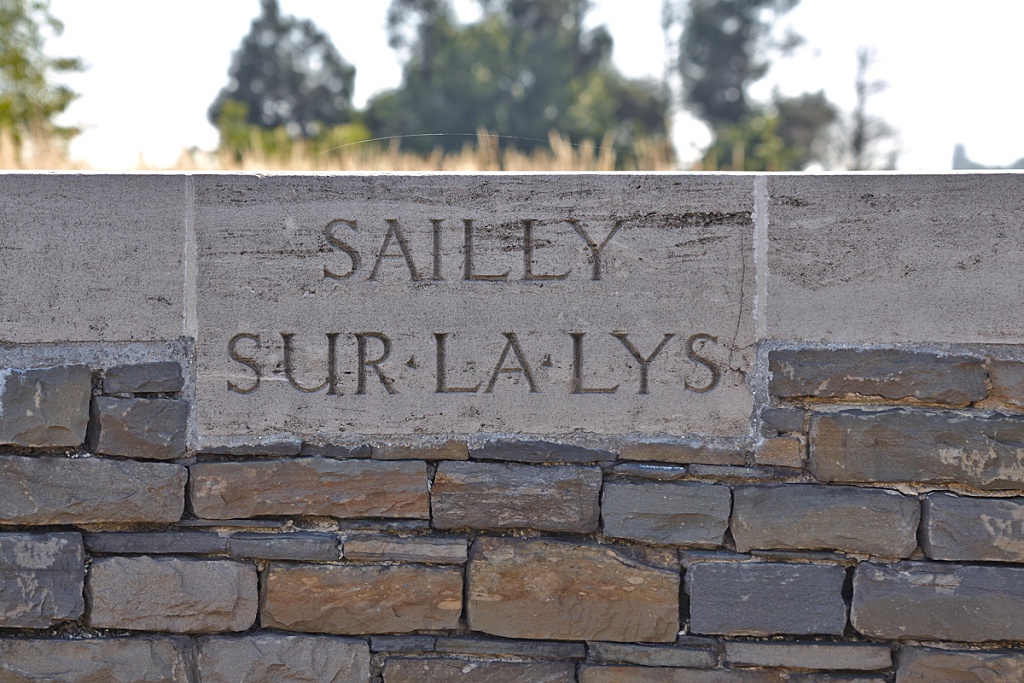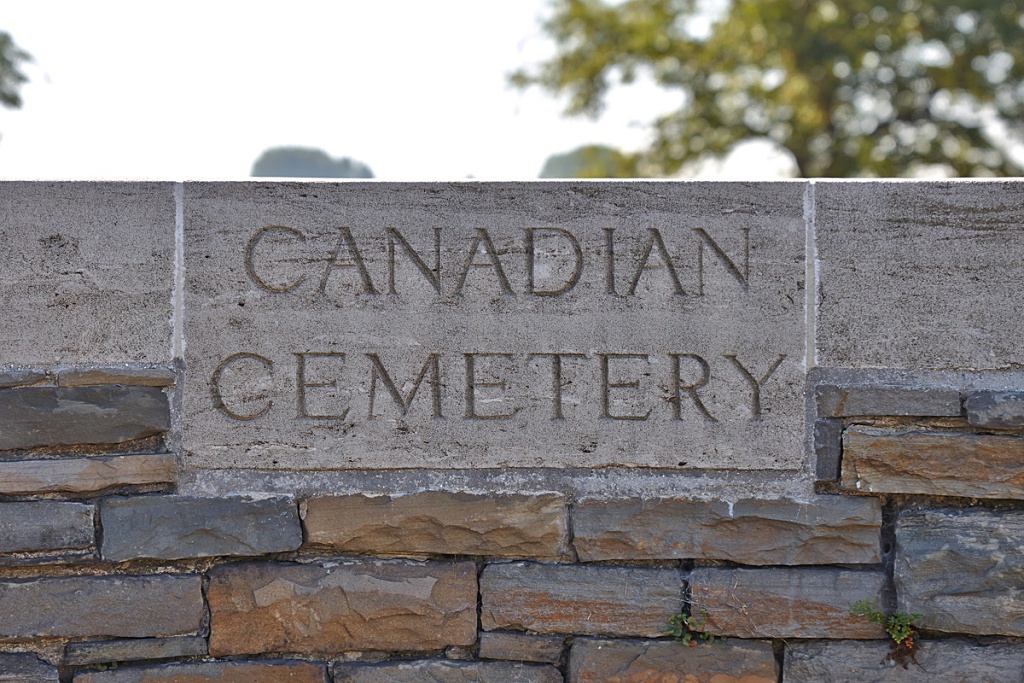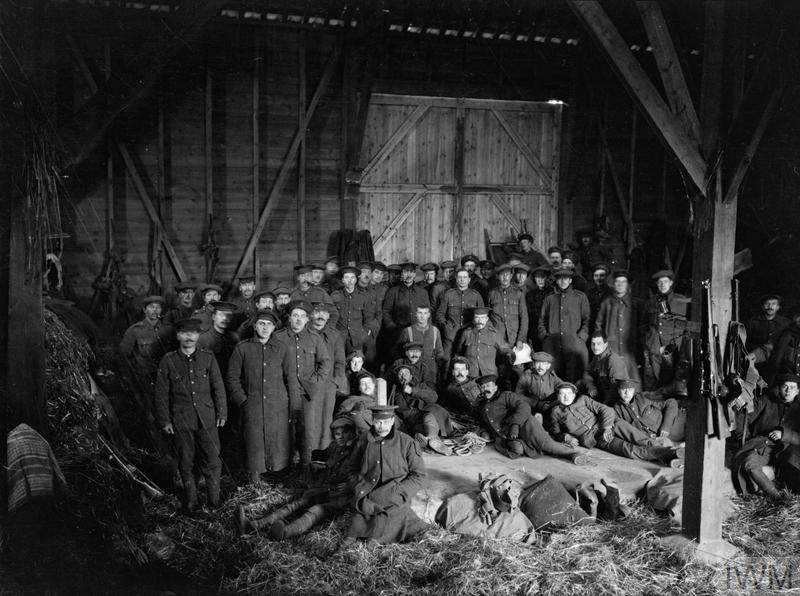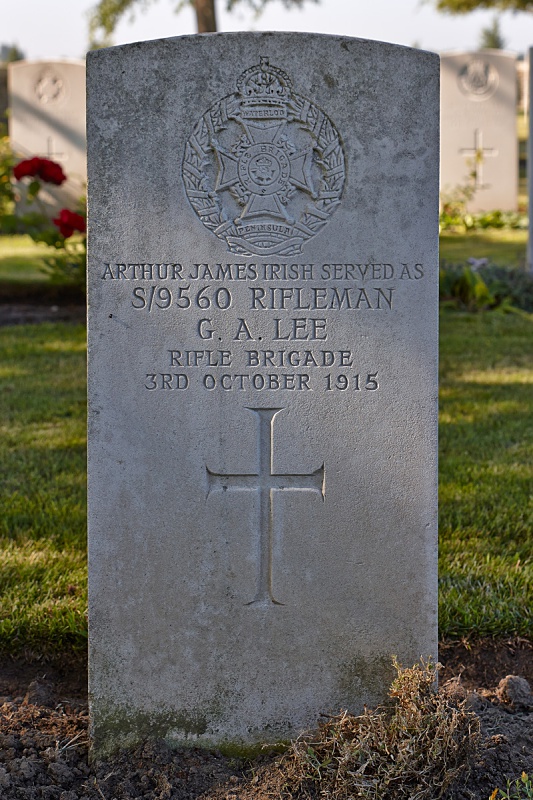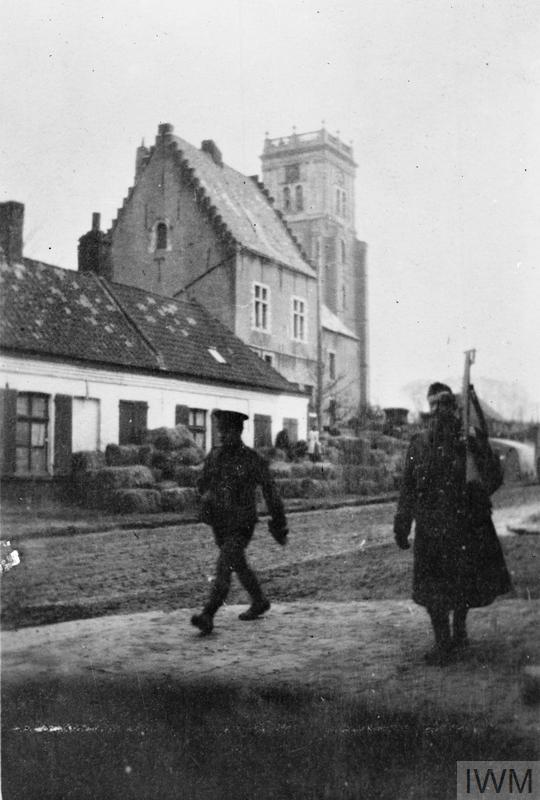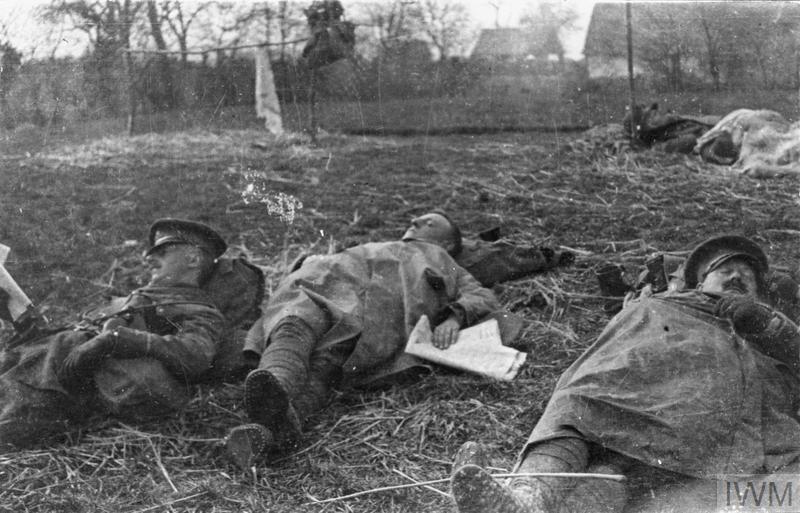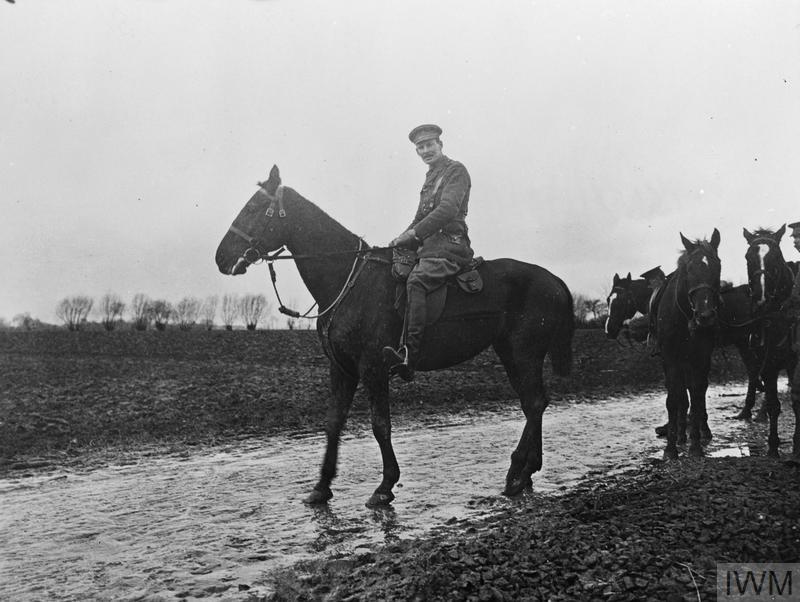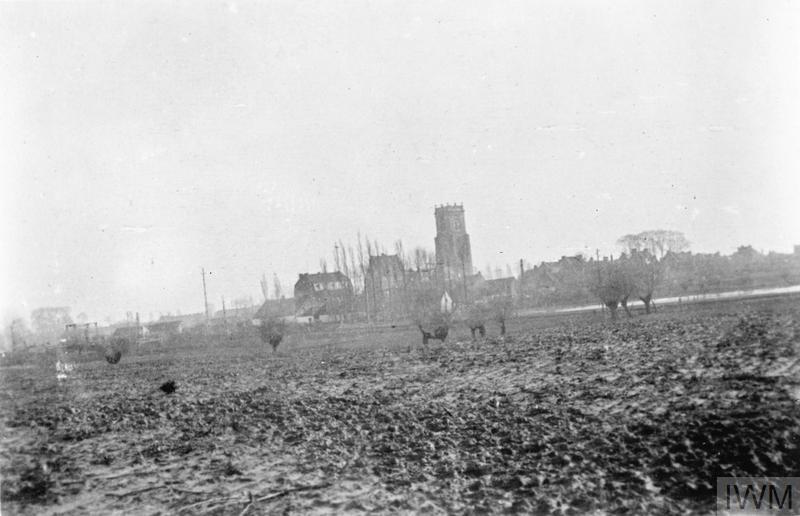SAILLY-SUR-LA-LYS CANADIAN CEMETERY
Pas De Calais
France
GPS Coordinates - Latitude: 50.65271, Longitude: 2.76325
Location Information
The village of Sailly-sur-la-Lys lies approximately 7 kilometres west of Armentieres. From Armentieres follow the road to Estaires, traversing the small town of Erquinghem-Lys and then joining the D945 to Estaires. Follow the D945 for approximately 5 kilometres until reaching the village of Sailly-sur-la-Lys. Continue through the village on the same road and the Cemetery lies 2 kilometres on the other side of the village, directly on the left hand side of the road opposite the Anzac Cemetery.
Historical Information
Sailly Church was burnt during the open fighting of October 1914, when French cavalry and British and German infantry fought on the Lys, but from the winter of 1914-1915 to the spring of 1918 the village was comparatively untouched. It was captured by the Germans on 9 April 1918, and it remained in their hands until the beginning of September.
The cemetery was begun by Canadian units in March 1915, and used as a front-line cemetery until July 1916; it contains 313 Commonwealth burials of the First World War and one German grave.
Casualty Details: UK 285, Canada 9, Australia 19, Germany 1, Total Burials: 314.
The cemetery was designed by Sir Herbert Baker
The village of Sailly-sur-la-Lys lies approximately 7 kilometres west of Armentieres. From Armentieres follow the road to Estaires, traversing the small town of Erquinghem-Lys and then joining the D945 to Estaires. Follow the D945 for approximately 5 kilometres until reaching the village of Sailly-sur-la-Lys. Continue through the village on the same road and the Cemetery lies 2 kilometres on the other side of the village, directly on the left hand side of the road opposite the Anzac Cemetery.
Historical Information
Sailly Church was burnt during the open fighting of October 1914, when French cavalry and British and German infantry fought on the Lys, but from the winter of 1914-1915 to the spring of 1918 the village was comparatively untouched. It was captured by the Germans on 9 April 1918, and it remained in their hands until the beginning of September.
The cemetery was begun by Canadian units in March 1915, and used as a front-line cemetery until July 1916; it contains 313 Commonwealth burials of the First World War and one German grave.
Casualty Details: UK 285, Canada 9, Australia 19, Germany 1, Total Burials: 314.
The cemetery was designed by Sir Herbert Baker
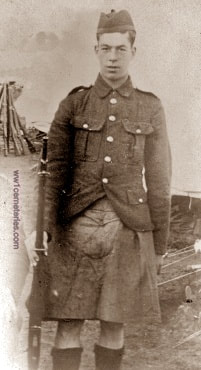
24253 Private
James W. Fowler
13th Bn. Canadian Infantry
7th March 1915, aged 19.
Plot II. A. 12.
Son of James and Agnes Benn Fowler, of 413, Beaumont St., Montreal, Canada. Native of London, England.
James W. Fowler
13th Bn. Canadian Infantry
7th March 1915, aged 19.
Plot II. A. 12.
Son of James and Agnes Benn Fowler, of 413, Beaumont St., Montreal, Canada. Native of London, England.
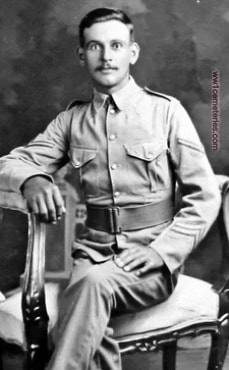
17100 Corporal
Andrew George Henderson
2nd Field Coy. Royal Engineers
18th March 1916, aged 27.
Plot I. C. 61.
Son of George and Rose Ann Henderson, of College Square, Stokesley, Yorks. Born at Whitley Lower, Dewsbury. Served 8 years, including 5 years in Egypt.
His headstone bears the inscription: "He Died That We Might Live May His Soul Rest In Peace."
Andrew George Henderson
2nd Field Coy. Royal Engineers
18th March 1916, aged 27.
Plot I. C. 61.
Son of George and Rose Ann Henderson, of College Square, Stokesley, Yorks. Born at Whitley Lower, Dewsbury. Served 8 years, including 5 years in Egypt.
His headstone bears the inscription: "He Died That We Might Live May His Soul Rest In Peace."
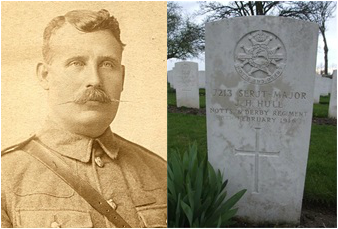
7213 Regimental Serjeant Major
Joseph Henry Hull, Mentioned in Despatches
11th Bn. Sherwood Foresters, (Notts and Derby Regiment)
8th February 1916.
Plot II. D. 92
Born 1874, Sneinton, Nottingham, Nottinghamshire
Picture courtesy of great nephew, Rich Lomanto
Joseph Henry Hull, Mentioned in Despatches
11th Bn. Sherwood Foresters, (Notts and Derby Regiment)
8th February 1916.
Plot II. D. 92
Born 1874, Sneinton, Nottingham, Nottinghamshire
Picture courtesy of great nephew, Rich Lomanto
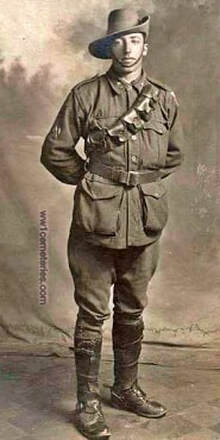
2845 Lance Corporal
Thomas Atherton Johnston
5th Div. Signal Coy. Australian Engineers
15th July 1916, aged 26.
Plot I. A. 17.
Son of William Edward and Teresa Johnston, of "Eulams", Stattus St., Coburg, Victoria, Australia.
His headstone bears the inscription: "Have Mercy Upon Him Lord And Let Perpetual Light Shine Upon Him."
Thomas Atherton Johnston
5th Div. Signal Coy. Australian Engineers
15th July 1916, aged 26.
Plot I. A. 17.
Son of William Edward and Teresa Johnston, of "Eulams", Stattus St., Coburg, Victoria, Australia.
His headstone bears the inscription: "Have Mercy Upon Him Lord And Let Perpetual Light Shine Upon Him."

35706 Private
Timothy Cassimor O'Malley
10th Bn. Australian Infantry, A. i. F.
19th May 1916, aged 30.
Plot I. B. 30.
Son of William and Maggie O'Malley; husband of H. M. O'Malley, of 73, Alfred St., Parkside, South Australia. Native of Jamestown.
His headstone bears the inscription: "R. I. P."
Timothy Cassimor O'Malley
10th Bn. Australian Infantry, A. i. F.
19th May 1916, aged 30.
Plot I. B. 30.
Son of William and Maggie O'Malley; husband of H. M. O'Malley, of 73, Alfred St., Parkside, South Australia. Native of Jamestown.
His headstone bears the inscription: "R. I. P."
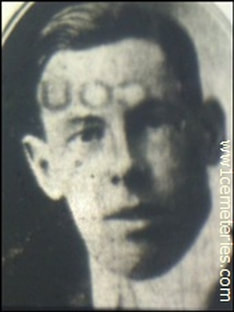
1970 Private
Thomas Penhorwood
25th Field Ambulance, Royal Army Medical Corps
10th May 1915, aged 27.
Plot II. C. 69.
Son of Lewis and Martha Penhorwood, of Reddown, Egloskerry, Cornwall.
Thomas Penhorwood
25th Field Ambulance, Royal Army Medical Corps
10th May 1915, aged 27.
Plot II. C. 69.
Son of Lewis and Martha Penhorwood, of Reddown, Egloskerry, Cornwall.
Two images above © Geerhard Joos
Shot at Dawn
S/9560 Rifleman Arthur James Irish, 2nd Bn. Rifle Brigade, executed for desertion 3rd October 1915, aged 30. Plot 1. E. 86. (served as LEE). Son of the late Henry William and Margaret Ann Irish, of 4, Salt Lane, Salisbury.
S/9405 Rifleman W. Smith, 2nd Bn. Rifle Brigade, executed for desertion 3rd October 1915, aged 37. Plot 1. E. 87.
Both the above were old soldiers, from the Reserve: the former had joined up in the name of George Lee, & had served for 12 years in another regiment, while Smith had served in the Boer War. When their battalion was in rest, the 2 men got drunk & went absent. 6 days later they gave themselves up to the British Consul in Dunkirk. Irish was dressed in a blue coat & dungarees, & carried a workman’s pass. At trial, it emerged that Irish (who stated that he had a dependent widowed mother) was subject to a suspended sentence for a previous absence. Mercy was recommended for each, on account of previous good work in the trenches, but in vain. Irish’s mother was informed that her son had been killed in action at Loos. (Putkowski,p, 54-55)
S/9560 Rifleman Arthur James Irish, 2nd Bn. Rifle Brigade, executed for desertion 3rd October 1915, aged 30. Plot 1. E. 86. (served as LEE). Son of the late Henry William and Margaret Ann Irish, of 4, Salt Lane, Salisbury.
S/9405 Rifleman W. Smith, 2nd Bn. Rifle Brigade, executed for desertion 3rd October 1915, aged 37. Plot 1. E. 87.
Both the above were old soldiers, from the Reserve: the former had joined up in the name of George Lee, & had served for 12 years in another regiment, while Smith had served in the Boer War. When their battalion was in rest, the 2 men got drunk & went absent. 6 days later they gave themselves up to the British Consul in Dunkirk. Irish was dressed in a blue coat & dungarees, & carried a workman’s pass. At trial, it emerged that Irish (who stated that he had a dependent widowed mother) was subject to a suspended sentence for a previous absence. Mercy was recommended for each, on account of previous good work in the trenches, but in vain. Irish’s mother was informed that her son had been killed in action at Loos. (Putkowski,p, 54-55)

